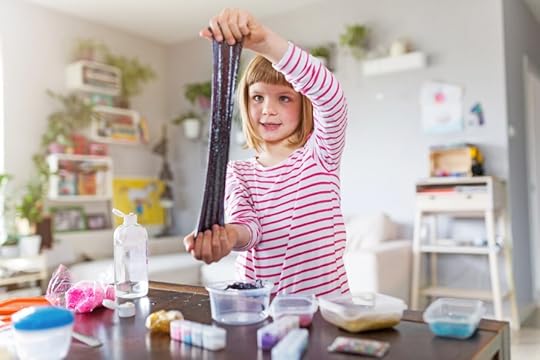How Slime Activities Foster Calmness and Creativity in Kids with ADHD: Enhancing Focus and Imagination

Kids with ADHD often need activities that engage their senses while providing a calming effect. Slime is more than just a toy; it offers a unique way to express creativity while bringing a sense of calm. Slime activities can help children with ADHD by giving them a hands-on experience that aids in self-regulation and enhances creative thinking. The tactile experience of slime can be soothing, helping to reduce restlessness and improve focus.
The process of making and playing with slime allows for creative expression. Kids can choose colors, textures, and add-ins like glitter or foam beads, sparking their imagination. This freedom not only boosts creativity but also offers a sense of accomplishment and joy. By engaging in such activities, children can develop better focus and express themselves in non-verbal ways.
Nicolas Boucherie, Founder of SlimeCity Studios (Europé), suggests that for parents looking to introduce their kids to slime, it’s easy to buy a Slime kit online, this provides a convenient way to bring this engaging activity into their homes.
With a little preparation, these slime kits can become a regular part of a child’s play routine, offering both learning and relaxation.
ADHD affects how children behave, learn, and interact with others. It can lead to challenges in paying attention, controlling impulses, and maintaining focus. Recognizing these symptoms early can aid in managing the condition and supporting the child’s development.
Defining ADHD and Its Impact on Child DevelopmentADHD, or Attention-Deficit/Hyperactivity Disorder, is a common condition that affects the brain’s development. It usually appears in childhood and can continue into adulthood. Children with ADHD often face difficulties in concentrating on tasks, sitting still, or following directions. This can impact their performance in school and affect their relationships with family and friends.
Their inability to focus affects their learning and social skills. They might struggle to remember instructions and frequently lose important items. Managing ADHD requires understanding its impact on a child’s development and finding ways to support them effectively. Early interventions, such as behavioral therapy and educational support, can be beneficial in helping them cope with everyday challenges.
Identifying Symptoms and ChallengesChildren with ADHD show a variety of symptoms, which can be categorized into inattention, hyperactivity, and impulsivity. Inattention may manifest as difficulty staying focused, an inability to complete tasks, or making careless mistakes. Such children often get easily distracted by events around them or daydream frequently.
Hyperactivity involves excessive movement or talking. They might fidget constantly, have trouble staying seated, or run about in inappropriate situations. Impulsivity refers to hasty actions without thinking, like interrupting conversations or making impulsive decisions.
Understanding these symptoms can guide parents and educators in identifying ADHD. Recognizing these challenges allows for better support systems to help children thrive in school and social settings. This includes structured routines and clear expectations in various aspects of their daily life.
Slime as a Therapeutic ToolSlime activities can play a role in helping children with ADHD by offering calming effects through sensory play, boosting creativity with tactile interaction, and promoting focus through structured play. These aspects make slime a valuable resource in therapeutic settings and at home.
The Calming Effects of Sensory PlaySlime provides a soothing sensory experience that can help reduce stress and anxiety in children with ADHD. Its stretchy, squishy texture can be satisfying to touch, offering an outlet for excess energy and a way to relax. Playing with slime can be likened to using a stress ball, helping children calm down through repetitive, hands-on activities. It’s also a way for kids to focus on something tangible and immediate, which can briefly pull them away from overwhelming thoughts or distractions.
Boosting Creativity Through Tactile StimulationWhen children engage with slime, they can use their imagination to create various shapes and textures. This playful activity provides a creative outlet without the pressure of achieving a perfect result. They can try different colors and add small objects to the mix for additional sensory experiences. This variety encourages creative problem-solving and exploration. Playing with slime can improve mood and stimulate the mind by allowing kids to experiment freely in a low-stress environment.
Structured Play and Enhanced FocusUsing slime for structured activities helps children with ADHD develop focus and attention. Making slime requires following steps and measuring ingredients, which introduces an element of routine. This organized play can be engaging and helps guide children toward a goal. Moreover, using slime as a part of “alongside” activities can facilitate better communication and interaction without direct conversation, helping build rapport and guiding children to focus on the task at hand. By promoting mindfulness, slime activities can aid in grounding children and enhancing their ability to concentrate on specific tasks.
The post How Slime Activities Foster Calmness and Creativity in Kids with ADHD: Enhancing Focus and Imagination appeared first on Geek Mamas .



